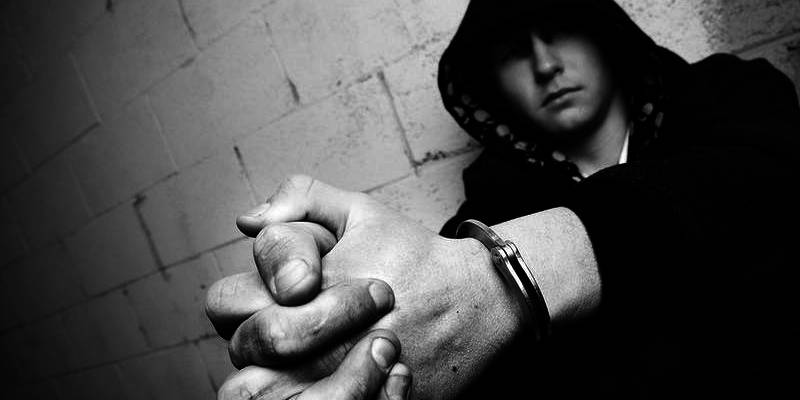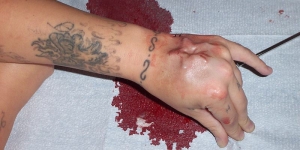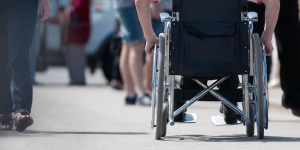On December 25th, 1998, a sixteen-year-old boy approached his sleeping father with a knife. For reasons unknown, this boy had intentions of murder–and stabbed his father repeatedly in the head, neck, and arms. Because his attempt was ultimately unsuccessful, this juvenile, Shawn, was charged with attempted murder.
During the trial, Shawn’s attorney claimed he had been sleep walking, and thus committed the crime unintentionally; however the prosecution’s expert disagreed vehemently, saying this was not a plausible excuse. After the determination of Shawn’s sentence was postponed 90 days, Judge Edwards determined the juvenile should be sentenced to Santa Clara County’s Juvenile Hall only until the age of 19–a mere 3 year sentence for attempted murder. Having found this outcome quite troubling, the prosecutor commented, “I think that it was a tremendous injustice that was done in this case. …[W]e didn’t treat this individual the way that he should have been treated.” Shawn’s case is just one of many examples of juveniles who have gotten off easy for serious crimes.
In America, juvenile sentences have differed from adults’ since 1899, when the first juvenile court opened in Chicago. The age defining a person as a juvenile varies between countries and states–for example, in Wyoming they are considered individuals 19 or younger, but in Connecticut, New York, and North Carolina, they are defined as those 15 and under. Whatever the age, the law officially defines a juvenile as someone who is not old enough to be held responsible for criminal actions. Because they’re considered unable to take this responsibility, there are many differences between juvenile hearings and adult trials. For instance, in juvenile courts rehabilitation and community protection are considered primary goals for the child, and sentences are generally less lengthy and more merciful. Contrastingly, when an adult is tried in a criminal court, their punishment is given according to the proportion of their offense.
There are two main theories behind the necessity of juvenile courts. The first is that juveniles do not have the intellectual or moral capacity to understand the consequences of their criminal behavior. However, it seems naive to say such a thing, as a child who arranges the time, place, and means to assault another person must naturally know full well what they’re doing. The second, more plausible argument is that children are more susceptible to change than adults, and therefore should be given a second chance and rehabilitation to get them back on track.
Juvenile rehabilitation varies widely, including things such as after-school programs and housing in home groups for minor crimes, or youth prisons and boot camps for violent crimes. Unfortunately, these programs don’t seem to be creating any notable improvements in children–according to the NSW Bureau of Crime Statistics, non-domestic violence offenses among juveniles rose more than 20% between 2001 and 2010, and domestic violence rose by 167%. As Dr. Weatherburn from the Bureau of Crime Statistics says, “it’s naive to imagine that a young offender, after years of involvement in crime, will experience an epiphany and suddenly become law abiding.” And indeed, their habits have proven hard to change. After being released from rehabilitation, 2,600 of the 4,938 juveniles who came before NSW courts in 1999 re-offended 4 times on average before 2010. Furthermore, the likelihood of re-offence among indigent kids is as high as 83%.
Clearly, although children may be more susceptible to change, they aren’t taking their chances to do so. It seems that ineffective rehabilitation programs may play a part in this; still, that doesn’t change the fact that juveniles are responsible for their decisions. That is to say, when a juvenile intentionally commits a violent crime, they must accept the consequences of their actions–they must be tried as adults. This doesn’t entirely solve the increasing problem of juvenile delinquency, however. Debating how to try them after the crime is certainly important, but more important issue is this how to stop juvenile crime from occurring in the first place.
Toby Eccles may hold the solution. In his TED talk on social change, he reveals that 27% of offenders in prison and 70% of prostitutes have spent time in a state care system. With this information in mind, Eccles approached the ministry of justice. He proposed an idea of a social impact bond, a bond which helps fund socially motivated programs with private money. This bond is currently in effect in many parts of the world, and helps families with low socioeconomic statuses on the edge of spending time in care by giving them intensive family therapy. This keeps them from ever having to enter the care system at all, lowering the risk of criminal offenses and prostitution.
This social impact bond also helps those who have already been convicted. Eccles found that in the UK, 63% of men charged with short sentences re-offend within a year. Typically, such offenders are simply turned loose after they’ve completed their sentence, leaving them to wonder where they’ll even spend their first night. Such a shaky start is just asking for a re-offence. With Eccles’ system, however, offenders are met at the prison gate after they’ve served their time, and are connected with whatever care and help they need. Because these people are less likely to offend, there fewer crimes and fewer victims. This saves prison and court costs and helps offenders build a new life.
In summary, juveniles should take full responsibility for their intentional criminal actions. Justice is not served when anyone, no matter how old, gets away with murder. However, as much effort as possible should be expended in avoiding the need for imprisonment or rehabilitation programs in the first place. By helping families raise their socioeconomic status, and helping those released from prison build a steady life, money will be saved, violence will diminish, and victims will be spared.
We would love to hear your thoughts on the subject. Drop us a line in the comments below and we can have a chat.
Chana Elizabeth Bainter
Image Credits: alptraum/BigStock.com







